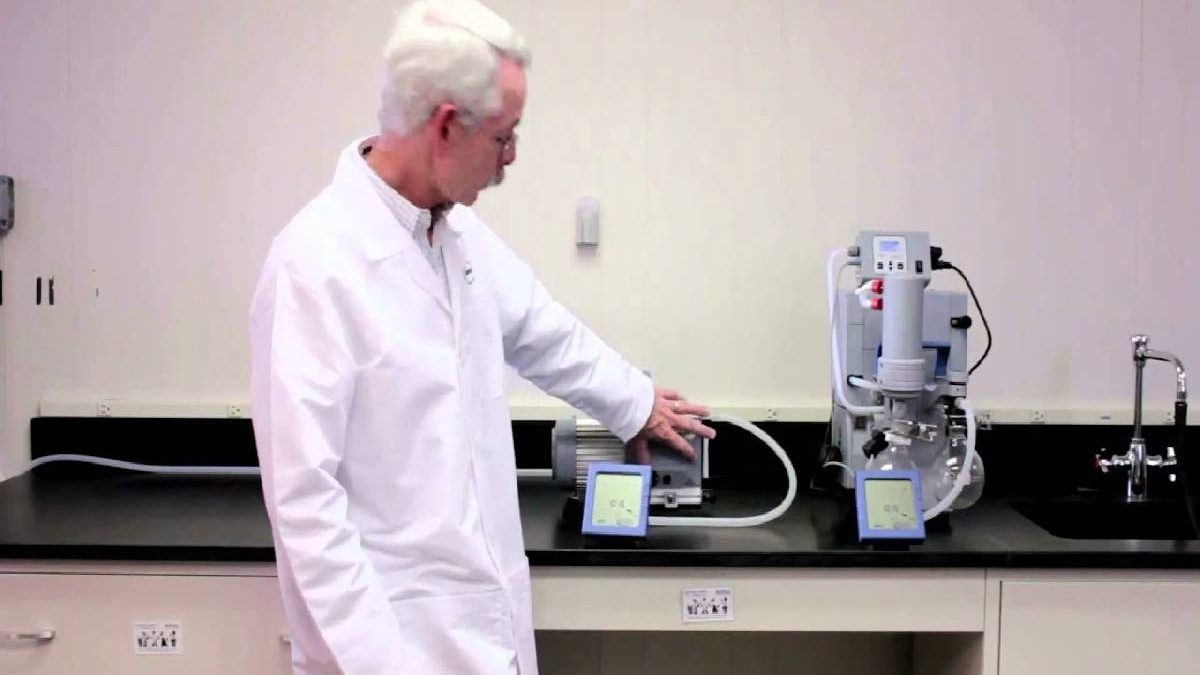Vacuum pumps are typically used to take out all the gas molecules from a sealed room or receptacle. When you’re looking for a vacuum pump in the market to use in the laboratory, there’s no dearth of choices in the market.
Although typically associated with semiconductors and electric lamps, the equipment can also be found in a lab. For instance, a laboratory vacuum pump will be used to manage the evaporation of the solvent, take out the extra moisture in the room, minimize vapor pressure, as well as filtrate or aspirate fluid.
According to data, the vacuum pump industry is expected to register a compound annual growth rate of 6% from the $4.4 billion in 2018. The growth is attributed to the steady demand for semiconductors around the world. China and Japan remain the two most dominant manufacturers.
Table of Contents
Buyer’s Guide to Laboratory Vacuum Pump
The objective should dictate function. You need to be clear about what type of requirements you need for your laboratory, which should determine the type of laboratory vacuum pump to buy.
For vacuum pumps, there are typically four types designed for lyophilization or freeze-drying, concentration, and evaporation.
Diaphragm
This type of vacuum pump is used for evaporation or concentration. It is not viable for lyophilization due to the insufficient depth of the equipment. The dry pump utilizes a pulsing motion that closes and opens valves to trigger air movement. As such, you do not need oil to prompt the movement of parts. Since it does not require oil, it is less susceptible to damage. It is also resistant to corrosion, chemical, and vapor. This feature makes it the perfect tool when you’re dealing with corrosive solvents and acids.
Scroll
It is another type of dry pump that compresses vapor and air using dual spiral scrolls, then channels them toward the exhaust. The gear is also less susceptible to damage and does not require a lot of maintenance, although it is more costly compared to the diaphragm. It is designed for freeze-drying, but you need to change the scrolls every 40,000 hours. However, it does not work as well with acid. It is recommended that you use it for materials containing less than 20% acid.
Rotary Vane
In comparison, the machine is smaller than the other vacuum pumps, and it can also be the most affordable. One thing about the rotary vane is its flexibility, as the laboratory can use it for multiple applications. The mechanism requires oil to lubricate all the components. You may also need condensers to collect the vapors before they enter the pump, as it may result in damage. One downside is the rotary vane requires high-maintenance, as you need to check and change the oil every 3,000 hours.
Hybrid
This type of laboratory vacuum pump is a combination of the diaphragm and the rotary vane. The diaphragm will function a the gate to maintain negative pressure on the oil for the rotary vane pump. As a result, the vapors are eliminated; the oil is condensed. Compared to the standard rotary vane pump, you can change the oil every 300,000 hours. The hybrid pump is typically used for freeze-drying.
These are common types of vacuum pumps that are used in laboratories around the world. The price will depend on the brand, capacities, and features.
Helpful Resources:
1. Top 10 commandments of the long distance runner
2. Pilates exercises to do at home
3. Best Chest Exercises For Building Muscles

